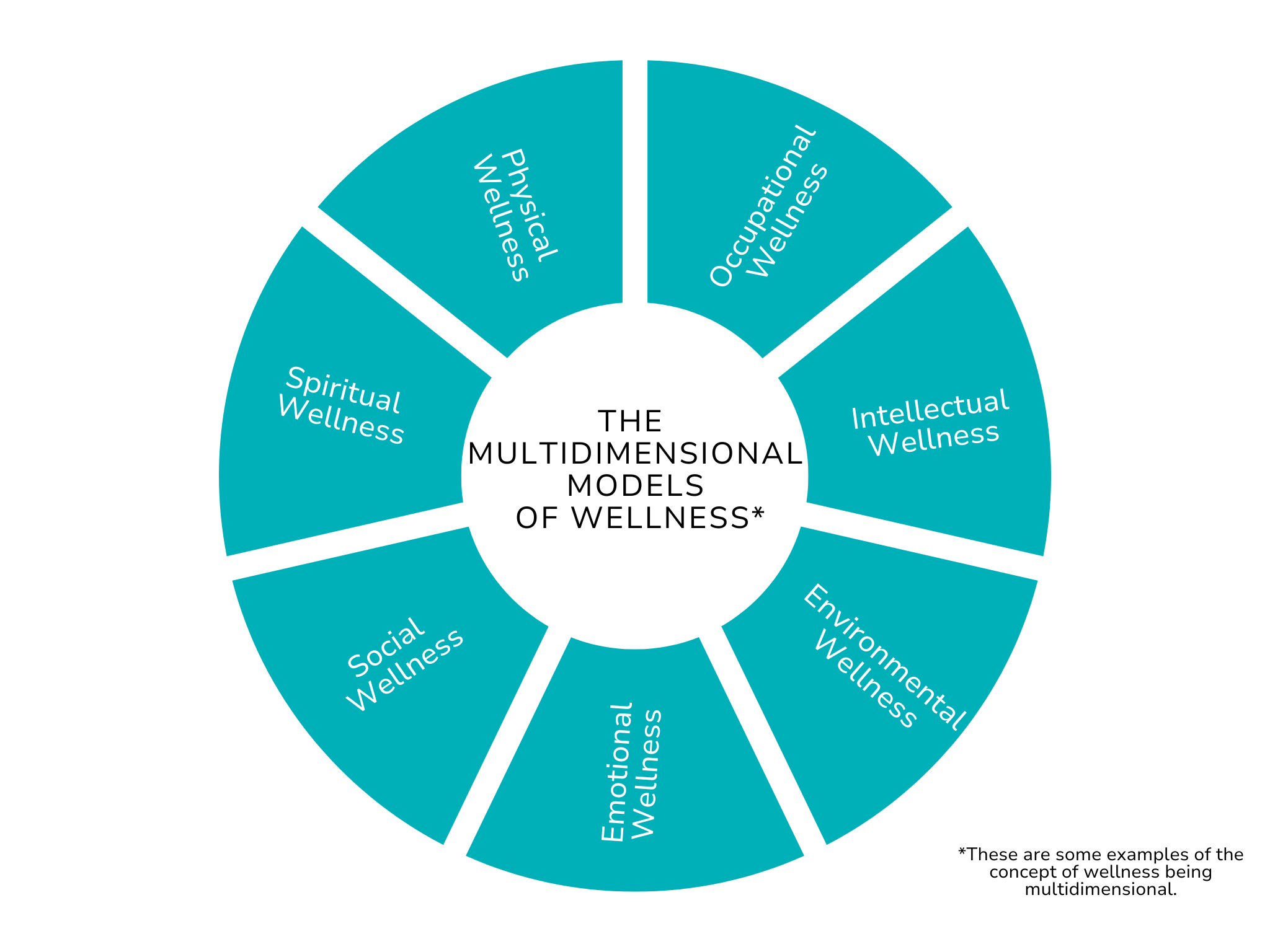What is health and wellness? What is the difference between the two? While they may appear similar, they are not identical. Many definitions of health and wellness have been created over the years. The World Health Organization (WHO) defines health as “a state of complete physical, mental, and social well-being and not merely the absence of disease or infirmity (illness)”. The National Wellness Institute defines wellness as “a practice of becoming aware of and making choices towards a more successful existence”. The biggest difference is that health is the goal and wellness the active process of achieving it.
This section on Wellness and Well-being covers:
The Multidimensional Models of Wellness
Wellness With a Bleeding Disorder
The Multidimensional Models of Wellness
Wellness is more than just your physical health and well-being. Wellness also includes other aspects of your life. These can include emotional, environmental, intellectual, spiritual, social, and occupational wellness, just to name a few. Sometimes these different aspects are referred to as dimensions of wellness.
There are a lot of models of wellness out there and a lot of definitions of wellness dimensions. Here are some basic definitions of the different aspects of wellness:
Awareness of how we feel in our body; Finding and eating the right foods for our body; Knowing the importance of movement and what works best for our body; Getting enough sleep; Following treatment plans and taking necessary medication; Regularly visiting your health care provider.
Having life-giving relationships and interactions with others; Ability to seek out and receive support from family, friends, and other trusted individuals; Being active in your community; Communicating and expressing our thoughts and feelings to others; How we spend our free time.
Identifying the emotions and feelings of yourself and others; Recognizing emotional triggers and how to cope with them; Knowing how to regulate your emotions and responses; Having coping mechanisms and tools; Understanding yourself; Expressing emotions to others in a productive way.
Having a career that is meaningful to you and utilizes your talents and skills; Establishing and maintaining a work-life balance; Working in a healthy and supportive environment; Financial compensation that allows for other essential needs to be met.
Understanding your values and beliefs; Learning about the beliefs of others; Recognition of a greater purpose and meaning in life; Recognizing the connection of the mind, body, and spirit.
Critical thinking, creativity, curiosity; Feeling engaged in learning; observing and listening to what is around you; Open to new experiences and ideas to continue to grow; Desire to learn new concepts, improve skills and seek challenges in pursuit of lifelong learning.
Knowing how our surroundings (home, neighborhood, town etc.) impact our health and wellness; Identifying stressors in our environment and then creating home and work environments that work for us (i.e., changing the lighting, getting rid of clutter, buying a more supportive chair); Spending time outside in natural settings; Recognizing our impact on environmental resources and taking steps to conserve when possible.
A Few Things to Know
These are just some of the many definitions of the dimensions of wellness. While there are aspects of these definitions that are universal, definitions of wellness can also be very personal. Not all aspects of these definitions may apply to you and your child. One dimension is not more important than another one. They are all interconnected and work together to create balanced wellness and well-being in your and your child’s life. Overall, wellness can also be affected by larger social structures like culture, your socioeconomic status, your environment, and access (or lack thereof) to things that improve your wellness.
Wellness With a Bleeding Disorder
You and your child increase your sense of wellness when you feel more balanced in your lives. When your child has a blood or bleeding disorder, a lot of focus may understandably be put on their physical health. It can feel all-consuming at times. If physical health and wellness is taking all your and your child’s focus, it can impact the other dimensions of wellness. Since all dimensions are interconnected, this may cause you or your child to feel out of balance.
So, what do you do about this? Tools like the wellness wheel exist because they can help you figure out what part of your and your child’s life might need more attention and where to start. Has your child been going to health care provider appointments non-stop and hasn’t spent any time with their friends? Maybe their social wellness is out of balance, and they may feel better after a playdate with their friends. It can be as simple as taking one small step like this.
Wellness tools should not add more stress to your life. Even if you identify multiple dimensions needing attention, you do not need to work on all of these at the same time. Start by making one small change in your and your child’s daily life.
If you would like more information about wellness, please go to the National Wellness Institute.

